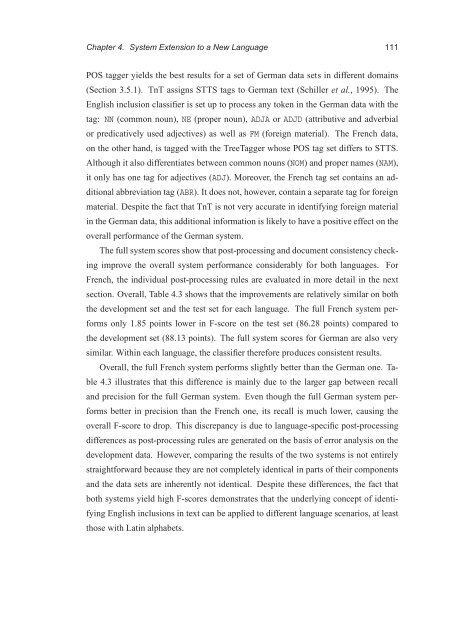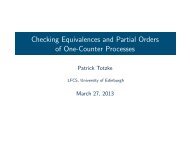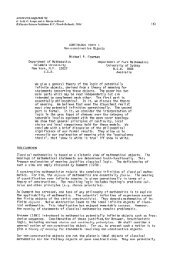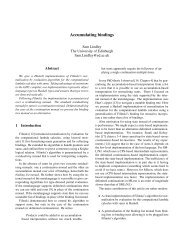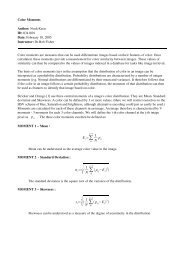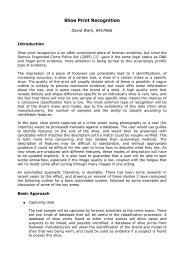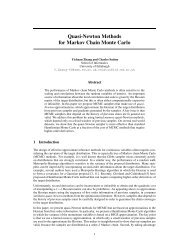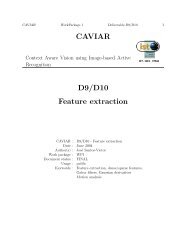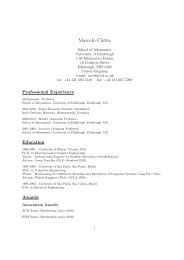PhD thesis - School of Informatics - University of Edinburgh
PhD thesis - School of Informatics - University of Edinburgh
PhD thesis - School of Informatics - University of Edinburgh
Create successful ePaper yourself
Turn your PDF publications into a flip-book with our unique Google optimized e-Paper software.
Chapter 4. System Extension to a New Language 111<br />
POS tagger yields the best results for a set <strong>of</strong> German data sets in different domains<br />
(Section 3.5.1). TnT assigns STTS tags to German text (Schiller et al., 1995). The<br />
English inclusion classifier is set up to process any token in the German data with the<br />
tag: NN (common noun), NE (proper noun), ADJA or ADJD (attributive and adverbial<br />
or predicatively used adjectives) as well as FM (foreign material). The French data,<br />
on the other hand, is tagged with the TreeTagger whose POS tag set differs to STTS.<br />
Although it also differentiates between common nouns (NOM) and proper names (NAM),<br />
it only has one tag for adjectives (ADJ). Moreover, the French tag set contains an ad-<br />
ditional abbreviation tag (ABR). It does not, however, contain a separate tag for foreign<br />
material. Despite the fact that TnT is not very accurate in identifying foreign material<br />
in the German data, this additional information is likely to have a positive effect on the<br />
overall performance <strong>of</strong> the German system.<br />
The full system scores show that post-processing and document consistency check-<br />
ing improve the overall system performance considerably for both languages. For<br />
French, the individual post-processing rules are evaluated in more detail in the next<br />
section. Overall, Table 4.3 shows that the improvements are relatively similar on both<br />
the development set and the test set for each language. The full French system per-<br />
forms only 1.85 points lower in F-score on the test set (86.28 points) compared to<br />
the development set (88.13 points). The full system scores for German are also very<br />
similar. Within each language, the classifier therefore produces consistent results.<br />
Overall, the full French system performs slightly better than the German one. Ta-<br />
ble 4.3 illustrates that this difference is mainly due to the larger gap between recall<br />
and precision for the full German system. Even though the full German system per-<br />
forms better in precision than the French one, its recall is much lower, causing the<br />
overall F-score to drop. This discrepancy is due to language-specific post-processing<br />
differences as post-processing rules are generated on the basis <strong>of</strong> error analysis on the<br />
development data. However, comparing the results <strong>of</strong> the two systems is not entirely<br />
straightforward because they are not completely identical in parts <strong>of</strong> their components<br />
and the data sets are inherently not identical. Despite these differences, the fact that<br />
both systems yield high F-scores demonstrates that the underlying concept <strong>of</strong> identi-<br />
fying English inclusions in text can be applied to different language scenarios, at least<br />
those with Latin alphabets.


